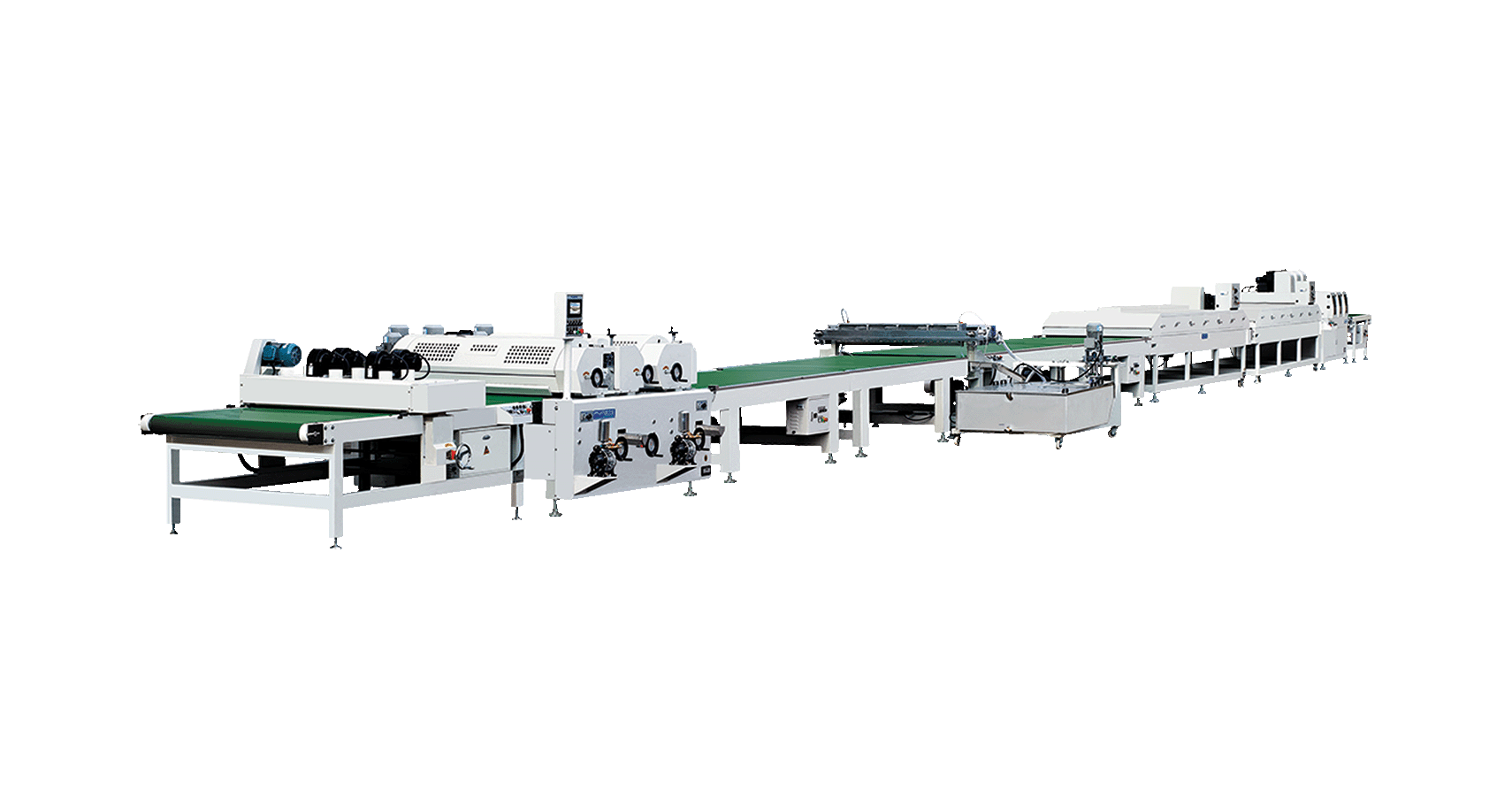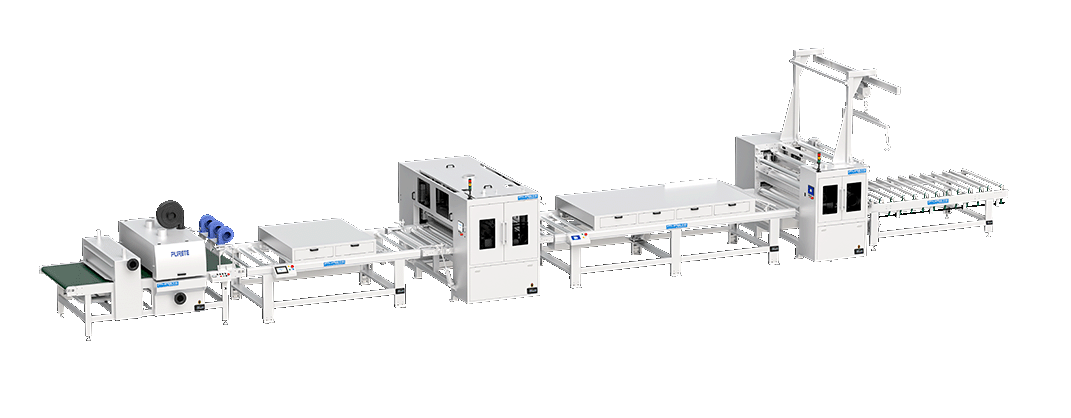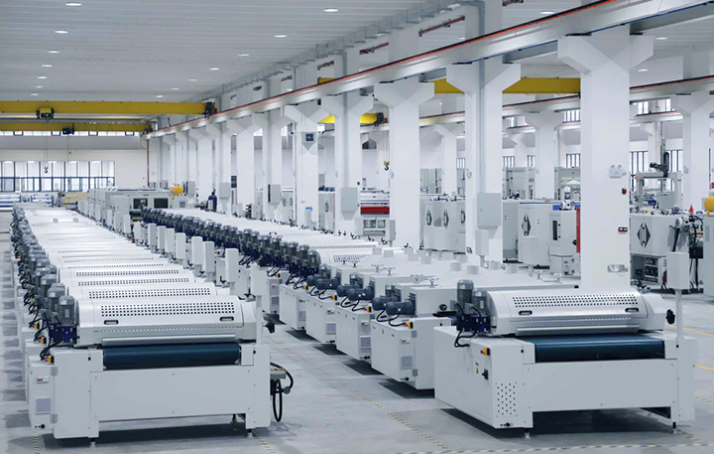How Spray Painting Machines Enhance the Quality of Wooden Doors and Cabinets
 May 07, 2025
May 07, 2025 Hits:7second
Hits:7secondIn modern furniture manufacturing, the quality of a product goes beyond its core materials and construction—it’s also about the finish. Wooden doors and cabinets, as key components of home interiors, demand high levels of visual appeal, durability, and personalization. One of the most critical processes that contribute to these attributes is surface finishing, and in particular, spray painting.
The integration of spray painting machines into the production line has revolutionized how wooden doors and cabinets are coated. From creating smoother finishes to improving longevity and supporting custom design trends, spray painting technology brings precision and consistency that manual application simply cannot match.
1. Enhanced Surface Appearance: A Flawless Aesthetic
First impressions matter, and for doors and cabinets, the appearance of the surface is crucial. Uneven paint, brush marks, or visible defects can significantly reduce the perceived quality of a product. Spray painting machines solve these issues by delivering a uniform and smooth coat that is consistent across the entire surface, regardless of its size or shape.
How it works: Spray painting machines atomize paint into fine droplets, which are then evenly deposited onto the surface. This creates a consistent layer that adheres perfectly to contours, edges, and flat panels alike.
Benefits:
Smoother Finishes: Automated spray systems ensure there are no brush marks or roller streaks.
Gloss and Texture Control: Depending on the type of spray equipment used, manufacturers can achieve different finishes, from matte to high-gloss.
Luxury Appearance: A flawless coating enhances the overall feel of the furniture, giving it a premium look and feel.
In high-end furniture, where aesthetics are non-negotiable, the ability of spray painting machines to deliver flawless finishes directly translates to higher market value.
2. Improved Durability: A Shield for Everyday Use
While visual appeal is important, furniture also needs to withstand daily wear and tear. Wooden doors and cabinets, especially in kitchens, bathrooms, and entryways, are constantly exposed to moisture, scratches, and physical contact. The spray painting process, when properly executed, contributes significantly to their durability.
Key Technical Advantage: Spray painting machines are calibrated to apply coatings with precise and consistent film thickness, which plays a major role in protective performance.
Durability Benefits:
Scratch Resistance: A consistent paint layer creates a harder, more resilient surface that can resist abrasions.
Moisture Protection: Uniform application helps seal the surface, preventing water infiltration that could lead to swelling or warping.
Stain Resistance: Coated surfaces are easier to clean and less likely to absorb contaminants.
This protective quality extends the functional life of doors and cabinets, reducing maintenance costs and improving long-term customer satisfaction.
3. Customization and Creative Freedom: Unlocking Design Possibilities
Modern consumers increasingly demand uniqueness and style. From gradient color finishes to textured patterns and special effects, spray painting machines offer the flexibility required to meet custom design needs.
Technological Capabilities: Advanced spray painting systems can be programmed to handle different color transitions, patterns, or layered effects. This opens the door for mass customization—producing small batches of highly individualized products without sacrificing efficiency.
Customization Features:
Gradient Effects: Smooth color transitions, such as ombre finishes or two-tone designs.
Textured Coatings: Simulated wood grains, metallic finishes, or tactile surfaces.
Color Variety: Ability to switch between paint colors quickly during production.
Whether the aim is to create a rustic kitchen cabinet or a modern, glossy wardrobe, spray painting technology supports a vast palette of design choices. Manufacturers can now align their product offerings more closely with evolving interior design trends and customer preferences.
The Competitive Edge of Automated Spray Coating
Beyond the direct product improvements, using spray painting machines offers additional advantages:
Operational Efficiency: Faster painting cycles, reduced labor dependency, and automated consistency.
Environmental Control: Better containment of overspray and VOCs (volatile organic compounds), supporting cleaner, safer working environments.
Cost Reduction: Lower paint waste and reduced rework due to defects or inconsistencies.
In highly competitive furniture markets, these process advantages can significantly improve both profit margins and brand reputation.
Conclusion: A Technological Upgrade That Delivers Quality
The impact of spray painting machines on the quality of wooden doors and cabinets cannot be overstated. By providing smooth, visually appealing finishes, enhancing surface durability, and enabling personalized designs, these machines have transformed traditional wood finishing into a highly efficient, precise, and value-adding process.
As consumer expectations rise and design preferences shift, manufacturers who invest in advanced spray painting technologies position themselves to deliver superior products—faster, cleaner, and more creatively than ever before. In an industry where the finish defines the final impression, spray painting machines have become an essential tool for achieving excellence.














